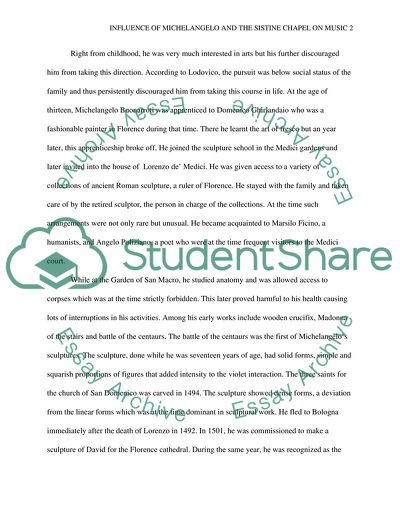Cite this document
(Influence of Michelangelo and the Sistine Chapel on Music Research Paper, n.d.)
Influence of Michelangelo and the Sistine Chapel on Music Research Paper. Retrieved from https://studentshare.org/culture/1742487-influence-of-michelangelo-and-the-sistine-chapel-on-music
Influence of Michelangelo and the Sistine Chapel on Music Research Paper. Retrieved from https://studentshare.org/culture/1742487-influence-of-michelangelo-and-the-sistine-chapel-on-music
(Influence of Michelangelo and the Sistine Chapel on Music Research Paper)
Influence of Michelangelo and the Sistine Chapel on Music Research Paper. https://studentshare.org/culture/1742487-influence-of-michelangelo-and-the-sistine-chapel-on-music.
Influence of Michelangelo and the Sistine Chapel on Music Research Paper. https://studentshare.org/culture/1742487-influence-of-michelangelo-and-the-sistine-chapel-on-music.
“Influence of Michelangelo and the Sistine Chapel on Music Research Paper”, n.d. https://studentshare.org/culture/1742487-influence-of-michelangelo-and-the-sistine-chapel-on-music.


